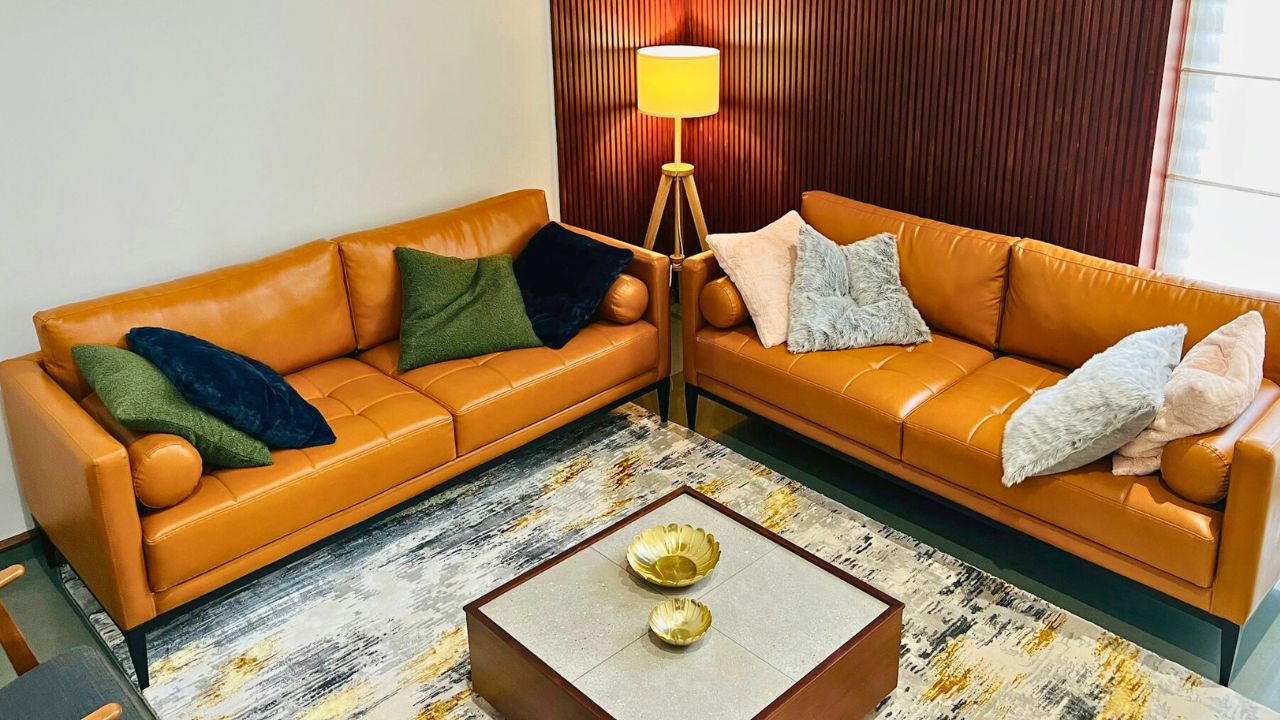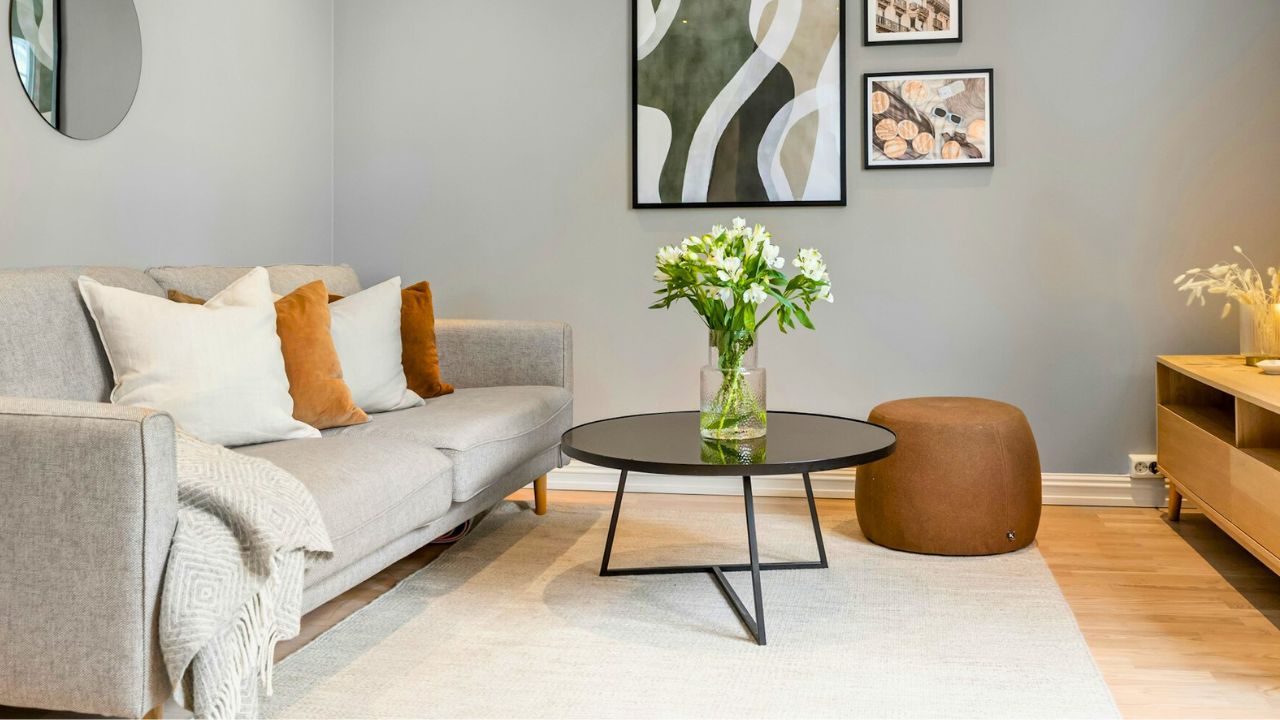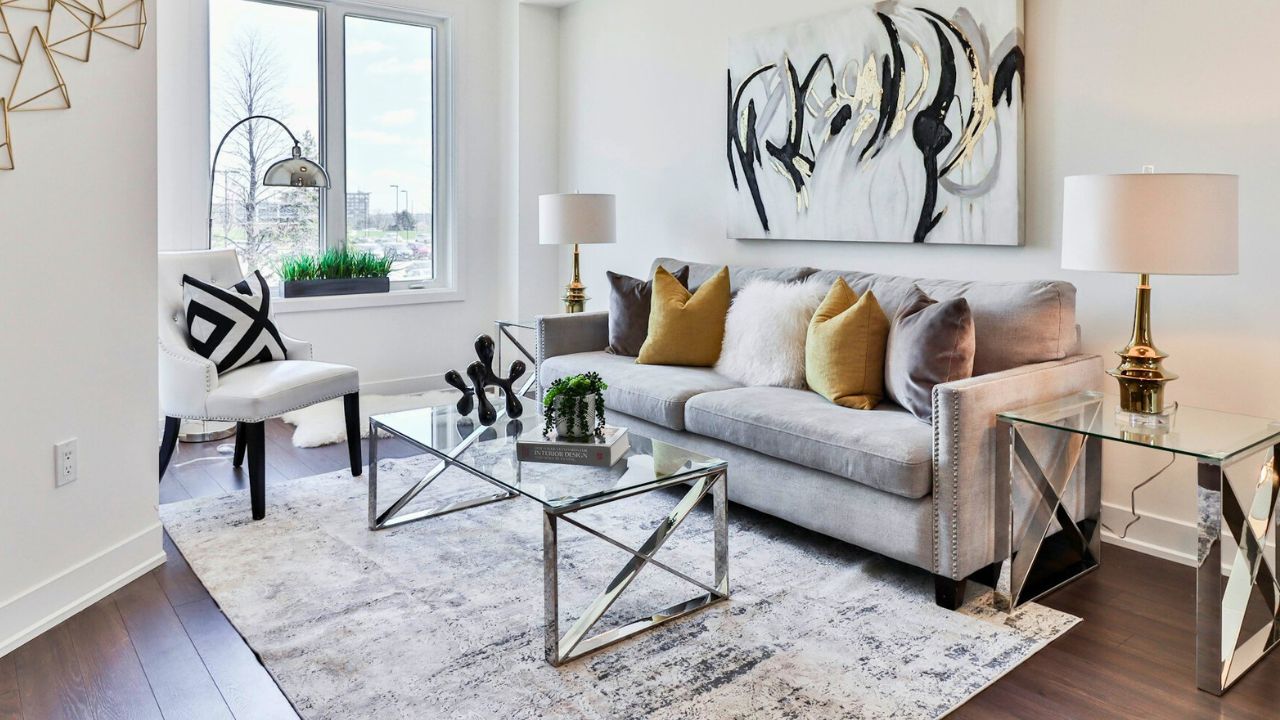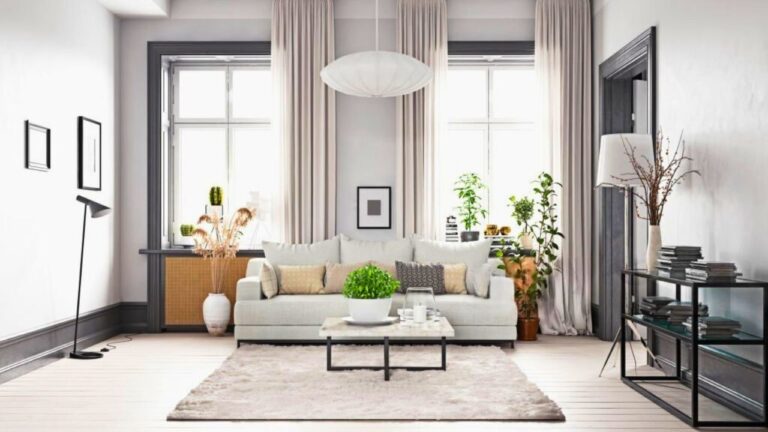9 times your rug choice made the whole room feel off
Rugs set the footprint, color temperature, and mood. When they’re wrong, everything else works harder and still can’t land. Here’s where rugs go sideways—and how to fix it without starting from zero.
The rug is too small for the seating group

If front legs don’t touch the rug, the furniture floats. Layer a big jute or sisal base and set your favorite patterned rug on top. Aim for front legs of every major piece on the rug to connect the group. The room will feel bigger because it finally has a defined island.
The color temperature fights your floors

Cool gray rug on honey oak can turn the wood yellow-orange. Warm beige on blue-gray tile can look muddy. Treat the floor like a color you must respect. Choose rugs that neutralize the undertone, or layer a natural fiber between floor and pattern to buffer the clash.
The pattern scale is competing with your curtains

Large botanical panels plus a large Persian can look like a shouting match. Vary scale: big pattern on the rug, quieter texture on the windows—or the reverse. Keep one dominant pattern and let the other layer support it.
The pile height is wrong for the room’s job

High-pile in dining rooms traps crumbs; flat-weave in echo-y living rooms can feel hard. Match pile to use. Flat or low-pile under tables. Plush or dense wool in movie zones. If you need easy cleaning, a good indoor/outdoor rug layered with a softer throw rug gives you both function and feel.
The rug stops short of natural traffic paths

A runner that ends before the doorway or a living rug that pinches a walkway makes rooms feel cramped. Extend runners through the full path and size living rugs so there’s a comfortable lane around the coffee table. Flow reads as “designed,” even if nothing else changes.
The palette ignores the largest item in the room

Working around a bold sofa or mural? Pull two rug colors from that leader so the room speaks one language. Even a neutral rug with a thread of the sofa color will stitch it together. Or flip it: keep the rug quiet and make the pillows echo the art. Connection is the goal.
The shape doesn’t match the furniture plan

Rectangular room with a circular seating arrangement? Try a round rug or a rectangle big enough to hold the circle. In bedrooms, runners on both sides plus a bench runner can beat one massive rectangle in a tight space. Shape is an easy fix that changes the whole read.
The border is boxing the room

Strong rug borders can create a “frame inside a frame,” making rooms look smaller. If your walls already create heavy lines, choose a borderless rug or one with a soft fade at the edge. The eye will travel past the rug instead of stopping at it.
The rug looks tired because of lighting, not wear

Cool, overhead light flattens wool and makes even good rugs look dusty. Warm up the bulbs and add lamp light that grazes across the pile. Then vacuum in alternating directions to lift the fibers. Nine times out of ten, “old” reads new again.
Like Fix It Homestead’s content? Be sure to follow us.
Here’s more from us:
8 upgrades that look like you spent thousands (but didn’t)
9 small changes that instantly make a house feel high-end
*This article was developed with AI-powered tools and has been carefully reviewed by our editors.







